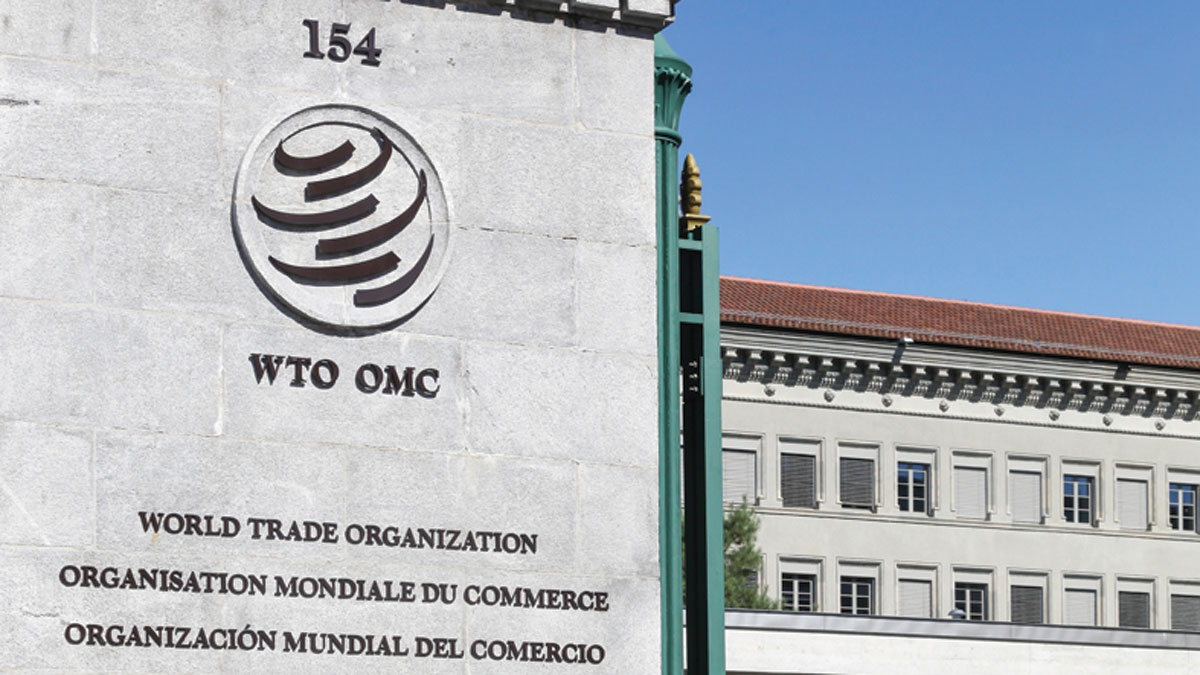
If Britain doesn’t agree a deal or an interim arrangement with the EU before Brexit, we will trade on WTO terms. What is the WTO and how would this work? Simon Wilson explains.
What is the WTO?
The World Trade Organisation is the global intergovernmental institution that sets the rules of worldwide trade and seeks to enforce them on behalf of its 164 member nations. It provides a framework for negotiating trade agreements and a mechanism for settling disputes.
The WTO is a fairly new institution. It was founded in 1995 (the UK was a founding member) and is headquartered in Geneva, as the successor to the General Agreement on Tariffs and Trade (Gatt, set up in 1947). The WTO is an institutional body, rather than an agreed set of rules, like Gatt. It goes further than Gatt in that it encompasses trade in services and intellectual property rights, as well as goods. The WTO was also designed to create a more level playing field for all nations, including smaller and developing ones.
What are the principles of the WTO?
Member states of the WTO are required to abide by trade rules laid out in about 60 different binding international agreements and governed by five guiding principles: non-discrimination (treating all other WTO members as “most favoured nations”); reciprocity; binding and enforceable commitments; transparency; and safety (a commitment to areas such as environmental protection and public health).
Has it done a good job?
When the WTO makes the headlines, it is often because another round of multilateral trade talks has stalled. The latest troubled round of negotiations, the Doha development round, which began in 2001, ran out of steam in 2008. However, the WTO and Gatt have undoubtedly helped to drive significant trade liberalisation over time.
For example, the average tariff level for the major Gatt participants in 1947 was about 22%, according to a 2015 paper for the National Bureau of Economic Research. By the Kennedy round in 1962, involving 48 countries, up from the original 23, the average tariff levels of Gatt states were 15%.
How about recent progress?
After the Uruguay round – which began in 1986 and led to the creation of the WTO – tariffs were under 5%. So over the decades, the WTO and its predecessor have helped to cut substantially the overall level of import taxes, and the period has also experienced an explosion in international trade. In 1950, international trade accounted for about 8% of global GDP. By 1995, that figure had reached 20%, and by the middle of this decade it was around 30% (according to WTO statistics).
Will the UK remain a member?
Yes. The UK has remained a member of the WTO in its own right, even though it currently operates through the European Union as a bloc. As such, the UK’s detailed WTO commitments on tariffs and non-tariff barriers to trade are set out in “schedules” shared by the other 27 EU member states. When it leaves the EU, Britain will need its own schedules – and for them to then be “certified” with no objections from other WTO members.
What will the UK try to do?
The UK’s position is that to start with it will “replicate as far as possible our current obligations” – ie, to continue with the arrangements it shares with the EU – thus minimising the chances of any objections. Moreover, protests would have to be backed with evidence and directly related to a trade issue (not a political issue, such as the Falklands, or Gibraltar, say). Nor is it in the interest of the WTO for the transition process to get bogged down. So although reverting solely to national membership of the WTO might be a pretty tough technical process, it need not be unduly traumatic.
What happens then?
The government hopes that post-Brexit it will be able to agree a new free-trade agreement with the EU27. But without one – under the WTO’s “most favoured nation” rules requiring non-discrimination – the UK and the EU would have to impose the same tariffs and barriers on each other that they apply to goods from other WTO countries.
If the UK leaves the EU but (at least at first) maintains the EU’s common external tariff (on imports from outside the EU) then a company moving parts between the UK and the EU could face a tariff charge every time the border was crossed. “Countries whose producers were hit by this development might make life difficult elsewhere for British negotiators,” says The Economist.
Are there other problems?
Yes. For example, WTO rules do not generally allow sector-specific deals; they favour broad-based ones. So, for example, if the UK agrees bilaterally with the EU not to apply tariffs on cars, the WTO’s “most-favoured nation” principle implies that it should offer the same tariff-free access to non-EU states too. Then there are tariff-rate quotas to consider (see box). Overall, there are a number of potentially fiddly issues.
A major sticking point
Another big issue is likely to be the WTO’s tariff-rate quotas (TRQs), which allow a certain amount of goods into a market at a cheaper rate. The European Union has almost 100 of them, and we can expect difficult arguments with former EU partners over how much of each quota the UK should be obliged to take over. For example, the EU’s current quota on beef imports is about 40,000 tonnes at a 20% import duty; above that the rate is much higher.
To protect European beef farmers, the EU will be keen to get the UK to take over as big a slice as possible of the lower-tariff quota. TRQs are set to emerge as “the most contentious” issue in the UK’s re-establishment of its status as an independent WTO member, and we should expect to hear much more about them as Brexit approaches, according to Luis González García of Matrix Chambers, a senior trade lawyer.